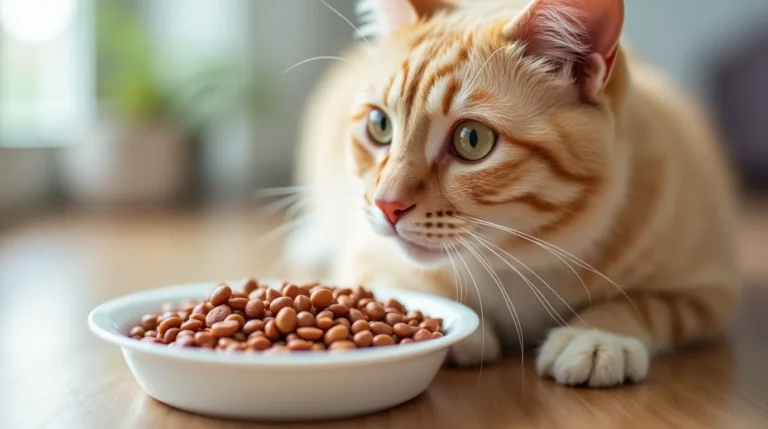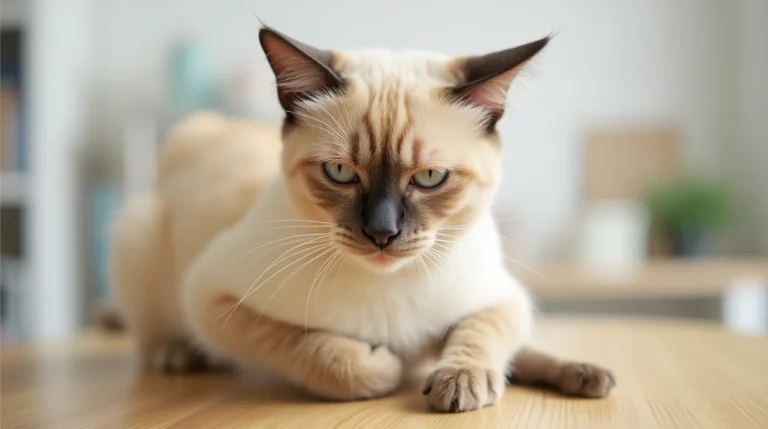Feeding your cat a raw food diet has become increasingly popular among pet owners who want to replicate a cat’s natural diet in the wild.
Advocates of raw feeding claim it promotes better health, shinier coats, and improved energy levels. However, this diet requires careful planning to ensure it’s nutritionally balanced and safe.
In this article, we’ll explore the benefits, risks, nutritional requirements, and tips for transitioning your cat to raw food.
What is Raw Cat Food?
Raw cat food refers to a diet made primarily from uncooked animal ingredients, such as muscle meat, organs, and bones. This type of diet mimics what cats would eat in the wild, where they primarily hunt small prey like birds, rodents, and reptiles.
Typically, raw cat food includes:
- Muscle Meat (e.g., chicken breast, turkey, beef)
- Bones (often ground for safety)
- Organs (e.g., liver, heart, kidneys)
- Supplements (to ensure a complete nutritional profile)
Raw diets may be prepared at home or purchased pre-made from companies specializing in raw pet food.
Benefits of Feeding Raw Cat Food
1. Improved Coat and Skin Health
Raw diets are rich in essential fatty acids, which contribute to a shiny, soft coat and healthy skin. Cats often experience reduced shedding and fewer issues like dry skin or dandruff.
2. Increased Energy Levels
Feeding raw cat food provides high-quality proteins and fats, which are essential for energy and muscle maintenance. Many owners report that their cats become more active and playful after switching to a raw diet.
3. Better Digestive Health
Raw diets are free from fillers, grains, and artificial additives that can irritate a cat’s digestive system. Cats often produce smaller, less odorous stools when eating raw food.
4. Mimics a Cat’s Natural Diet
Cats are obligate carnivores, meaning their bodies are designed to thrive on animal-based diets. Raw feeding aligns closely with their evolutionary dietary needs.
Potential Risks of Raw Feeding
While raw cat food has many advocates, there are risks that pet owners need to be aware of:
1. Risk of Bacterial Contamination
Raw meat can carry harmful bacteria like Salmonella and E. coli, which can pose health risks to both cats and humans handling the food. Proper handling and hygiene are critical.
2. Nutritional Imbalances
A poorly planned raw diet can lack essential nutrients, such as calcium, taurine, and vitamins. Without these, cats may develop serious health issues, including heart problems and brittle bones.
3. Choking Hazards
Whole bones can splinter or cause choking. Always ensure bones are appropriately ground or sized for your cat’s safety.
4. Cost and Time Commitment
Raw feeding can be expensive and time-consuming, especially if preparing meals at home. Pre-made raw diets are more convenient but come with a higher price tag.
Components of a Balanced Raw Cat Food Diet
For a raw diet to be safe and effective, it must meet your cat’s nutritional needs. Cats require:
1. High-Quality Protein
Cats need animal-based protein for energy, muscle maintenance, and overall health. Sources include chicken, turkey, rabbit, beef, and fish.
2. Essential Fatty Acids
Fats provide energy and help maintain a healthy coat. These are found in raw meat and fish, such as salmon or mackerel.
3. Calcium and Phosphorus
Bones are an essential source of calcium and phosphorus, which are critical for strong bones and teeth. Ground bones or bone meal can be used to meet this requirement.
4. Taurine
Taurine is an amino acid that is vital for a cat’s heart, vision, and reproductive health. It is found in high concentrations in raw organs like the heart.
5. Vitamins and Minerals
A complete raw diet includes organs (like liver and kidneys), which provide essential vitamins such as A and D. Supplements may be added if needed to fill gaps.
Homemade vs. Pre-Made Raw Cat Food
Homemade Raw Diets
Pros:
- You control the ingredients and quality.
- More cost-effective in the long run.
Cons:
- Requires careful research and effort to balance nutrients.
- Greater risk of contamination if not handled properly.
Pre-Made Raw Diets
Pros:
- Convenient and ready to serve.
- Often formulated to meet nutritional guidelines (e.g., AAFCO).
Cons:
- Higher cost than homemade options.
How to Transition Your Cat to a Raw Diet
Cats can be picky about their food, so transitioning to a raw diet should be done gradually:
1. Start Slowly
Begin by mixing a small amount of raw food with your cat’s current diet. Gradually increase the ratio of raw food over 7–14 days.
2. Experiment with Proteins
Cats may prefer specific proteins, such as chicken or rabbit. Try different options to see which one they like best.
3. Monitor Your Cat’s Health
Keep an eye on your cat’s energy levels, coat condition, and stool quality during the transition. If you notice any issues, consult your vet.
4. Consult a Veterinarian
Work with a vet or pet nutritionist to ensure the raw diet is complete and balanced for your cat’s specific needs.
Is Raw Food Safe for All Cats?
Raw diets are generally safe for healthy adult cats, but they may not be suitable for:
- Kittens: They have specific nutritional needs that require careful planning.
- Senior Cats: Older cats with health issues may struggle to digest raw food.
- Cats with Weakened Immune Systems: They may be more susceptible to infections from bacteria in raw meat.
Always consult your vet before starting a raw diet, especially if your cat has underlying health conditions.
Frequently Asked Questions About Raw Cat Food
1. Can I feed my cat exclusively raw food?
Yes, as long as the diet is nutritionally complete. Balance is key to avoid deficiencies or excesses.
2. How do I store raw cat food?
Raw food should be stored in airtight containers in the freezer. Thaw it in the refrigerator before serving.
3. Are pre-made raw diets better than homemade?
Pre-made diets are convenient and often nutritionally complete, but homemade diets can be customized to suit your cat’s preferences and needs.
4. How do I handle raw cat food safely?
Wash your hands, utensils, and surfaces thoroughly after handling raw meat. Avoid cross-contamination with human food.
5. Is raw food more expensive than kibble?
Yes, raw food is typically more expensive than kibble, but many owners feel the health benefits outweigh the cost.
Conclusion
Feeding your cat raw food can provide numerous health benefits, including better digestion, a shinier coat, and improved energy.
However, it requires careful planning and commitment to ensure it’s safe and nutritionally balanced.
Whether you opt for homemade meals or pre-made options, always consult your veterinarian to create a diet tailored to your cat’s needs.



